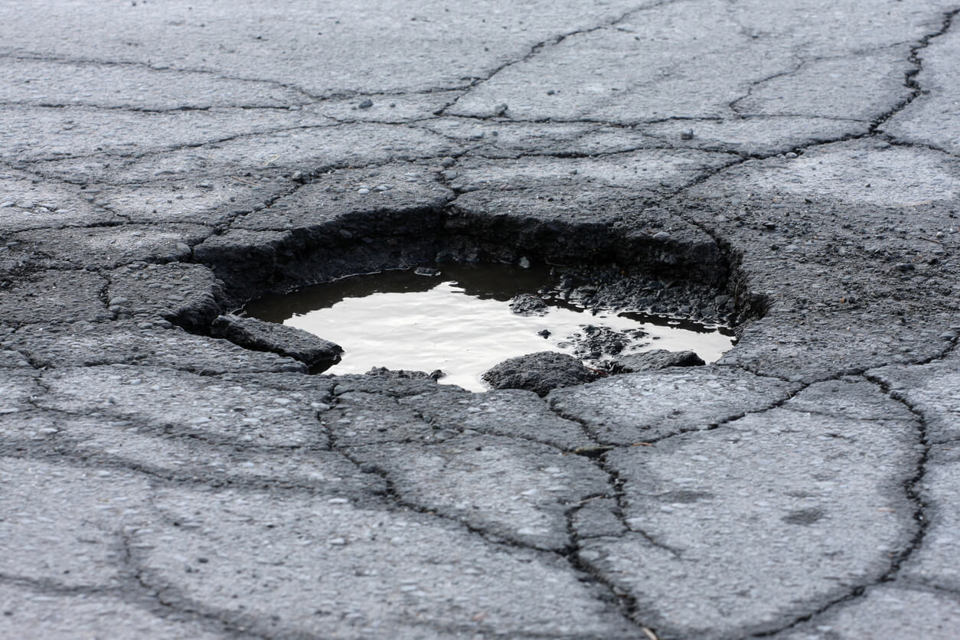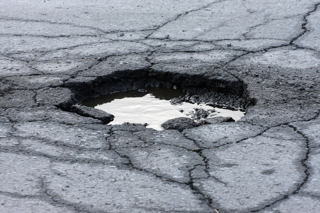Cash-strapped councils report that more than 24,400 miles of road are identified as needing essential maintenance in the next year, according to this year’s Annual Local Authority Road Maintenance (ALARM) survey.
Local authorities in England and Wales report that the gap between the funds they received and the amount they actually needed to keep the carriageway in reasonable order was almost £556 million – a shortfall of £3.3m for every authority. And, it would now take 14 years – up from 12 years in 2016/17 – to get local roads back into a reasonable steady state, provided adequate funds and resources were available.
Rick Green, chairman of the AIA, said: “Although local authorities report an increase in average highway maintenance budgets this year, looking back over the last decade they have barely kept in line with inflation. This is reflected in road condition, with one in five of our local roads now classed as structurally poor – with less than five years’ life remaining – compared with one in six reported last year.”
Local roads are a vital asset, worth in the region of £400 billion, but funding for their adequate maintenance has fallen short for so many years that further deterioration is inevitable, according to Green.
He continued: “We accept that there is no magic wand to wave, nor is there a bottomless pot of money to tap into. There are difficult choices to be made at both local and national level but the Government needs to provide adequate funding for a well maintained and safe local road network if it wants to support communities and drive economic growth.”
Key facts from the study, include: the average time before a road is resurfaced in England is 92 years, 31 years in London and 71 years in Wales; and the estimated one-time cost to get roads back into reasonable condition is £9.31bn – £72.3m per authority in England, £14.6m in London and £27.4m in Wales.
The report also reveals that there were 1.3 million potholes filled in England, 60,100 in London and 131,500 in Wales, while the total cost of road user compensation claims in England hit £28.3m (£8.2m in London and £590,000 in Wales).
RAC head of roads policy Nicholas Lyes said: “This latest report clearly highlights that the shortfall between what councils need to fix the roads, and the cash they actually have at their disposal, is as enormous as ever.
“It’s time for some fresh thinking when it comes to finally getting on top of Britain’s pothole problem. Short term funding and creating pots by which local authorities can bid for cash doesn’t appear to be addressing the root cause of the problem. Instead, the Government should be looking at how it can guarantee councils the certainty of reliable long-term funding so that they can finally bring every road up to a standard road users think is acceptable.”
In two years’ time, motorways and major roads will enjoy ring-fenced funding from Vehicle Excise Duty (VED) receipts. Lyes said: “If just a fraction of existing fuel duty revenue was ring-fenced specifically for local roads, over just a few years enough could be raised to allow councils to make proper, lasting repairs that are fit for the 21st century.
“As things stand, all road users are faced with the prospect of road surfaces falling into an even worse state making for increasingly uncomfortable, expensive and, in some cases, downright dangerous journeys.
“The recent bad weather will only have made matters worse. Before the cold snap, the condition of many local roads was on a knife edge and we now expect a number of these to deteriorate still further as we move into the spring.”
AA Cars has advised motorists that there are several ways they can minimise the risk of damage to their cars caused by potholes.
Simon Benson, of AA Cars, said: "Ensuring your tyres are inflated to the recommended pressure will help as a pothole impact with soft tyres is more likely to lead to wheel rim and other damage.
"You can find the correct tyre inflation pressures in either your vehicle’s handbook, on the label inside the driver’s side door frame or inside the fuel cap.
“Resist the urge to swerve or brake to avoid potholes. Swerving may mean lead to loss of control especially if you hit the pothole while trying to avoid it which, in turn, can cause even more damage than if you drive over the pothole in a straight line.
"Similarly, heavy braking compresses the front suspension which can place more weight and shock on the tyre and suspension as it strikes the pothole.
“You should reduce your speed if you know you’re approaching a pothole as this will lessen the chance of serious damage to your wheels and suspension. Do the same if you’re approaching standing water as this may disguise a deep and potentially dangerous pothole.
“If you do hit a pothole with some force, stop when it’s safe to do so and check your tyres for any obvious damage such as a split or bulge. If the steering pulls to one side or if the car handles oddly, or there are unusual vibrations then get your tracking and suspension checked as soon as you can."
The full 2018 ALARM survey can be downloaded by visiting www.asphaltuk.org.
See this week’s Fleet News for more on this story.























Ian - 20/03/2018 14:22
I wonder how the poor conditions of our roads will affect autonomous vehicles in the future - will they detect, slow down and avoid potholes, or drive through them at the current road speed limit risking damage or loss of control?